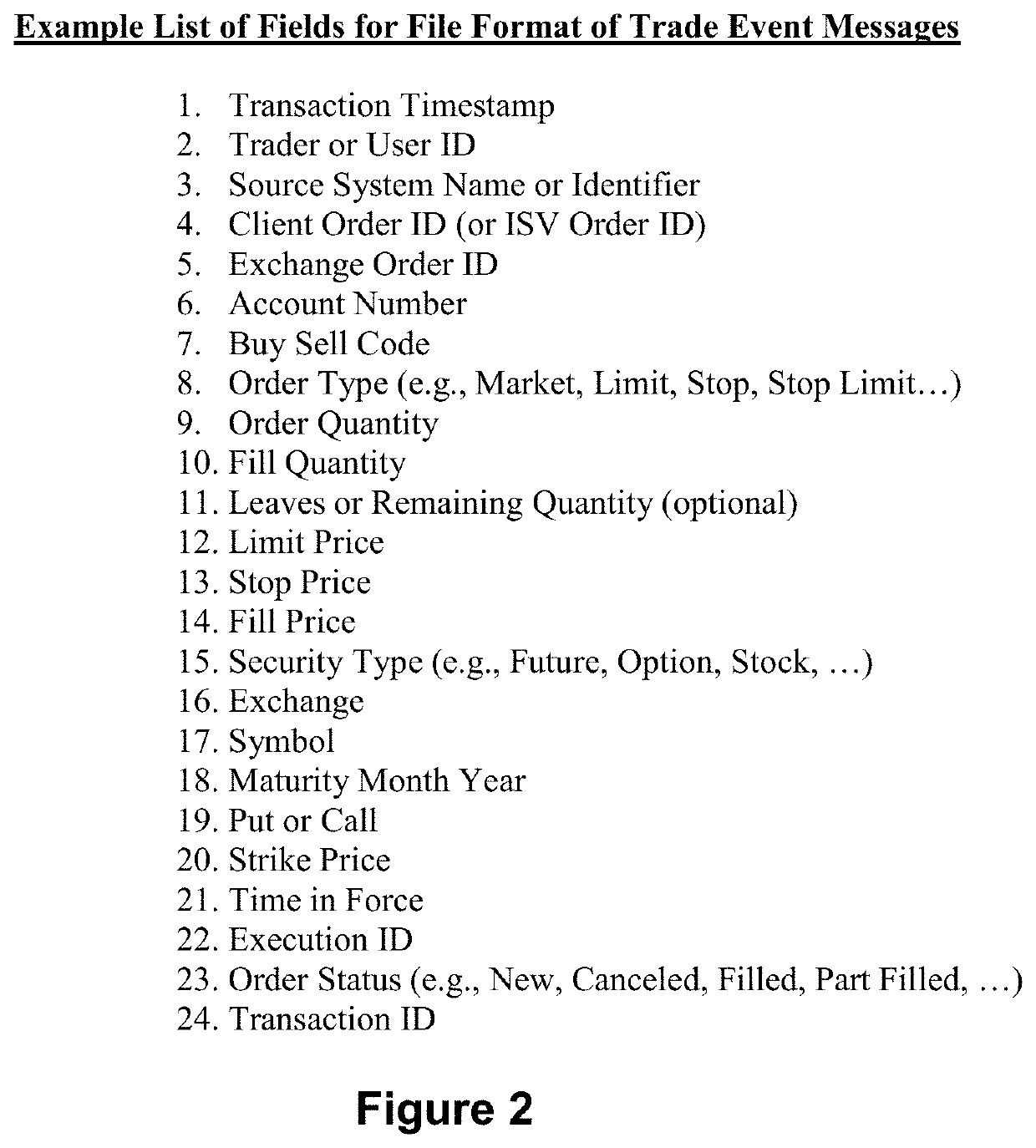Applied artificial intelligence technology for processing trade data to detect patterns indicative of potential trade spoofing
a technology of artificial intelligence and trade data, applied in the field of applied artificial intelligence technology for processing trade data to detect patterns indicative of potential trade spoofing, can solve the problems of not being able to clearly understand the governmental rules regarding acceptable trading activity versus prohibited conduct, not being able to monitor compliance, and being unable to meet the requirements of trading firm compliance,
- Summary
- Abstract
- Description
- Claims
- Application Information
AI Technical Summary
Benefits of technology
Problems solved by technology
Method used
Image
Examples
Embodiment Construction
[0033]Referring to the accompanying drawings in which like reference numbers indicate like elements, FIG. 1 illustrates an example of a specially-configured computer system that can be referred to as a spoofing neural cortex 100. The spoofing neural cortex 100 includes machine learning artificial intelligence 102 that is configured to quantify a likelihood that a given set of trading data exhibits patterns of trading behavior that qualify as trading spoofing in a financial market. The use of machine-learning artificial intelligence 102 by the computer system represents a significant technical improvement over conventional rule-based market surveillance systems. Not only is the machine-learning artificial intelligence 102 expected to produce better results in terms of more accurate spoofing assessments of trading data (e.g., fewer false positives, fewer false negatives), but perhaps more importantly, the machine-learning artificial intelligence 102 is highly amenable to adapting itse...
PUM
 Login to View More
Login to View More Abstract
Description
Claims
Application Information
 Login to View More
Login to View More - R&D
- Intellectual Property
- Life Sciences
- Materials
- Tech Scout
- Unparalleled Data Quality
- Higher Quality Content
- 60% Fewer Hallucinations
Browse by: Latest US Patents, China's latest patents, Technical Efficacy Thesaurus, Application Domain, Technology Topic, Popular Technical Reports.
© 2025 PatSnap. All rights reserved.Legal|Privacy policy|Modern Slavery Act Transparency Statement|Sitemap|About US| Contact US: help@patsnap.com



